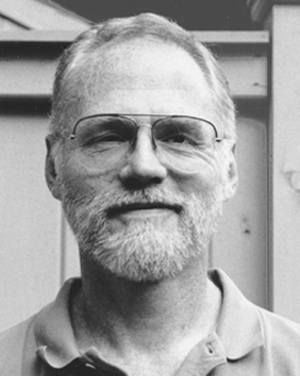(Not) The end of the world as we knew it

Greetings from the Outer Cape. I’ve enjoyed reading your thoughts.
Others have already spoken about Richard Fitzgerald’s key role in the success each of us enjoyed at the BSA. He was a cheerleader for me, and he was always willing to close his door and listen to my concerns. One of the delights of attending national AIA events with Richard was watching him “operate” within the larger community. I quickly recognized the high esteem that his colleagues had for him. I also want to lend a word about Richard’s staff. I worked very closely with Alexandra Lee when I was running Legislative Affairs, and I would literally trust her with my life. I also valued my interaction with Nancy Jenner and Penny Mitchell, both of whom were always ready to listen or lend a hand.
My term as BSA president was Y2K (remember that panic?), but the direction of my focus that year (and my year as president of AIA New England in 1997) had been determined by political and legal events of the previous 10 years.
In 1990, the Massachusetts legislature passed a 5 percent tax on professional services. When Bill Weld became governor the following year, one of his early actions was to veto that tax. Although we had dodged the bullet, for the first time I recognized the extent to which design professionals are vulnerable to the whims of politicians and others who wish to “eat our lunch.” A couple years later, a maverick midlevel operative within the Massachusetts Department of Revenue (DOR) convinced his superiors that design professionals had been inappropriately avoiding state sales taxes when incurring reimbursable expenses for Massachusetts state and municipal entity projects (e.g., tax-exempt projects such as public schools, municipal buildings). At first glance, this didn’t appear to be much of a concern, but when penalties and interest were added, several local firms were faced with potential out-of-pocket costs of several hundred thousand dollars. (Earl Flansburgh FAIA told me the execution of DOR’s initiative would force him out of business.) Our newly reconstituted Legislative Affairs Committee chose to tackle this problem, initially by reaching out to local engineering associations (primarily American Council of Engineering Companies (ACEC)) to develop active, productive relationships. After spinning our wheels for several months, we approached the BSA board of directors for permission to bring on a consultant who could help us navigate state government and to develop a strategy for reaching a solution that would minimize damage to design firms, and establish a clear DOR policy that would allow designers to proceed with public-sector design contracts without fear of similar developments. George Bachrach was hired as our consultant, and within the span of a few months, agreement on a plan was reached with DOR allowing firms to eliminate their potential liability at a small fraction of DOR’s original calculations.
This experience taught us the importance of strong inter-association relationships with everyone who works in the built-environment world and of the architectural community maintaining a key public presence in the region, and that the BSA needed to have a strategy for outreach to the key political entities that have a direct influence on our practice environment.

The year of my term was one of substantial public dialogue about the quality of life in Boston, with particular focus on the South Boston Pier District. Rebecca Barnes’ Civic Initiative was one response by the BSA. We also created a new position on the board in an effort to formalize our community’s interface with media.
On a personal note: I retired from full-time practice last fall. Over these past months, I’ve had time to think back on the more than 50 years since I started my BArch program and to marvel at where the profession has taken me (e.g., halfway around the world, 800 miles from the North Pole), the rich experiences it has provided, and the GREAT people whom I have met along the way. Major thanks to the BSA for providing me with the opportunity to serve our community.
Michael Hicks AIA, 2000 BSA president

